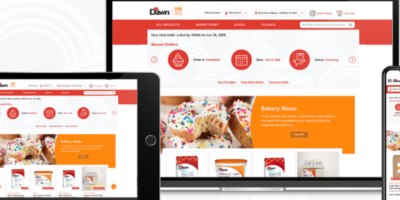
Customers more and more use social media to find merchandise. However new analysis exhibits that customers overwhelmingly favor to take a look at on a model web site, not on social.
For years customers have prolonged their procuring journeys throughout a number of channels. A Salesforce research in 2019 discovered that buyers work together with manufacturers throughout a mean of seven.6 touchpoints.
That development has accelerated. Customers not head on to the model web site or Google to find new merchandise.
Purchasing has shifted to the sting.
Social Commerce
Social media is a very powerful of those edge channels and an vital supply of buyer acquisition for manufacturers. Many now spend one-quarter or extra of their promoting finances on social.
My firm surveyed 501 U.S. customers in February 2022, inquiring about their use of social media for procuring. The outcomes we compiled in a report titled “State of Social Commerce 2022.” Our survey discovered that roughly half (48%) of web shoppers suppose social is “an excellent place to study new merchandise,” however solely 13% favor to purchase there. Nearly three-quarters (71%) of respondents favor to take a look at on the model web site.
This confirms a well-known sample of discovering on social, maybe by way of influencers, after which clicking to the model web site to purchase. However there’s an issue. In our survey, 81% of customers had encountered poor experiences on a model web site. Issues embrace out-of-stock merchandise, damaged hyperlinks, web site errors, and inconsistent context.
This isn’t shocking. A client who crosses channels typically sees a break within the expertise. Going from social to a model web site isn’t any totally different. However the stakes are increased on the model web site as customers count on to consummate the acquisition there. Thus brand-site issues damage income and fame.
That’s particularly the case if a social channel hyperlinks on to the product element web page. In a bygone period, customers arrived immediately on the model web site or by way of a search engine. Retailers funneled that site visitors, sometimes from the house web page to a class web page to, lastly, the product element web page with a single name to motion, add to cart.
However in 2022 product element pages are sometimes the place guests land, with bounce charges upwards of 72% increased than different pages. The outcome is a big income leak.
Therefore retailers ought to alter techniques to accommodate edge customers.
- Emphasize the expertise. Customers overwhelmingly favor to take a look at on the model web site. Fastidiously think about the place you refer this site visitors and the general social-to-brand expertise.
- Control stock. A prime shopper frustration is promoted merchandise which might be out of inventory. Customers rightly count on these items to be out there. Stock information on social is notoriously old-fashioned. Don’t submit fast-moving, low stock objects on social, and preserve an in depth eye on all promoted stock inventory.
- Repair your product element pages. Should you’re referring site visitors on to your product element pages, create variations for touchdown site visitors and embrace a variety of options and best-selling classes. Monitor your bounce charges for that site visitors and experiment with choices to plug the income leak. Take into account methods to proceed the social expertise, equivalent to including user-generated and influencer content material. And the extra you recognize about these guests, the higher to focus on them with personalised tales and presents.
A New Path
Social media is the place customers spend their time — 2.5 hours day by day, on common. There’s a brand new path to buy, the place customers begin their journeys on the edge however purchase on the model web site. By understanding this buyer choice and implementing just a few easy steps, retailers ship a greater expertise — and develop income.




















